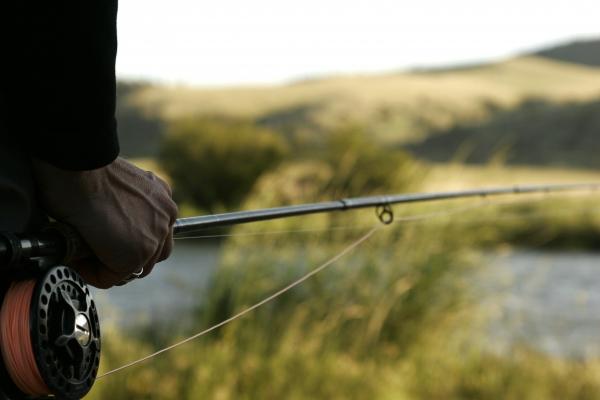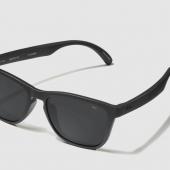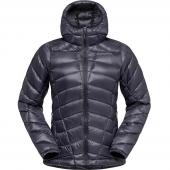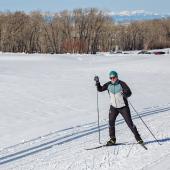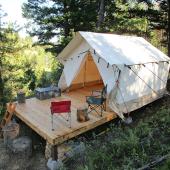Building Your Own Fly Rod
When asked why people build their own fly rods, longtime fly-fishing guide Dave McKee replies, “You get a sense of satisfaction from using something you put together yourself. I get a big kick out of being out there using my own flies and my own rod.” McKee, who works at the River’s Edge in Bozeman, says that half his customers are looking for a neat project and want to customize their rods, while the other half are mainly interested in saving money. And building one’s own rod can save a lot. According to Lawrence Stuemke of the Bozeman Angler, “You can build a custom fly rod for about half to two-thirds the price of a built rod.”
Blank & Components
Basic rod building begins with rod blank and component selection. Many options are available. A local fly shop or rod builder can help you choose those that best fit your budget, how and where you plan to fish, and your personal preferences.
-Rod Blank: Often referred to simply as a blank, it’s the main shaft of the rod to which you attach other parts.
-Reel Seat: Placed at the butt (lower) end of the blank. As the name suggests it holds the reel.
-Grip: Placed just above the reel seat. Pre-formed grips are available in many shapes, or you can fashion a custom grip by gluing cork rings together and then shaping them by hand with a file and sandpaper or by turning them on a lathe.
-Guides and Tip Top: Placed at intervals along the blank from above the grip to the tip of the rod. The line passes through the guides and tip top.
-Hook Keeper: An optional component placed above the grip and in line with the guides.
Other Equipment
You’ll also need plenty of winding thread and epoxy, for attaching the guides and giving the rod an attractive, durable finish. A sharp razor blade or utility knife and a good work light are essential. Thread must be under tension while winding—manufactured winding devices are available or you can build a simple homemade winding jig. You can also place a spool in a cup and run the thread through a book to create tension while you turn the rod on your lap.
Putting it Together
A rod-building workshop is a good way to learn how to build your own rod. An experienced rod builder can demonstrate the steps involved, point out common mistakes, and answer questions as you go along. Books and websites that provide step-by-step instructions are also available. (See sidebar.)
An important part of rod building is finding the blank’s stiff side, called the spline or spine. “Most fishermen don’t realize that their rod has a spline,” explains Howard Bethel, owner of Hawkridge Outfitters and Rod Builders. Bethel has been building rods for over 40 years and teaches rod-building workshops locally and nationally.
The spline runs longitudinally through each section of the blank. For best performance, rod builders align the real seat, guides, and tip top either along the spline or opposite the spline (on the soft side of the blank).
A challenging part of rod building is securing the guides, which involves turning the blank to wind thread around the bases or “feet” of the guides and the blank. The appearance of the finished rod depends largely on neat thread wrapping, so it is important to avoid overlaps and gaps.
One of the great things about building your own rod is that you can add special touches to make it distinctive. Many rod builders attach a small ring, called a winding check, just above the grip as an aesthetic feature. You can also choose the thread colors for your wraps. Some rod builders like to add a second color of thread adjacent to or within the guide wraps. Another good way to personalize your rod is to add your signature and perhaps the date, rod length, blank manufacturer, line weight, or other information.
To finish the rod, apply rod-wrapping epoxy over the thread windings and your inscription with a small paintbrush while turning the rod. As the epoxy cures, the rod must be turned to prevent the epoxy from sagging. One option is using a motorized rod turner. Another option is to rotate the rod every few minutes for two to three hours.
Completion Time & Difficulty
Bethel says it varies from person to person. His rod-building workshops with the Bozeman Adult Community Education Program run for five three-hour sessions. Some people finish in two or three sessions; others take longer. Bethel says the winding can be tedious, but “most fly tyers will have the dexterity to do a good job.” He sums up the allure of building a fly rod like this: “A lot of people tie their own flies. To have their own rod and their own flies and catch fish with them becomes a three-dimensional way to express themselves.”
Rod-Building Resources
HANDS-ON
Local fly shops and rod builders can help you select and order rod-building supplies. Some carry books, blanks, and components and offer rod-building workshops.
Local workshops like the Bozeman Adult Community Education Program are great ways to learn. Howard Bethel of Hawkridge Outfitters and Rod Builders (406-585-9608) teaches a graphite rod-building workshop in the winter session. Registration for the 2006 class will take place during fall semester. 406-522-6012.
Fly Fishing Discovery Center in Livingston offers a weekend rod-building workshop each year, usually in mid-March, also taught by Bethel. This year he’ll also be leading a one-day workshop at the Federation of Fly Fishers International Conclave, which will be held in Livingston in August. 406-222-9369.
The River’s Edge in Bozeman generally offers rod-building workshops in winter. 406-586-5373.
BOOKS
Start-to-Finish Fly Rod Building by Ryan Seiders and Dan Smith. Published by Flex Coat Company, makers of rod-wrapping epoxies and supplies. Features clear instructions and over 100 black and white illustrations.
Handcrafting a Graphite Fly Rod by L.A. Garcia. Frank Amato Publications. Features color photographs.
INSTRUCTIONAL WEBSITE
Fly Anglers Online has a detailed, 12-part guide to graphite rod building written by Al Campbell. flyanglersonline.com/begin/graphite.
SUPPLIERS
After checking first with your local fly shops, try the following:
Angler’s Workshop - 360-225-9445. anglersworkshop.com
Bob Marriott’s Fly Fishing Store - 800-535-6633. bobmarriots.com
Cabelas’s - Offers a rod-building catalog. 800-237-4444. cabelas.com


